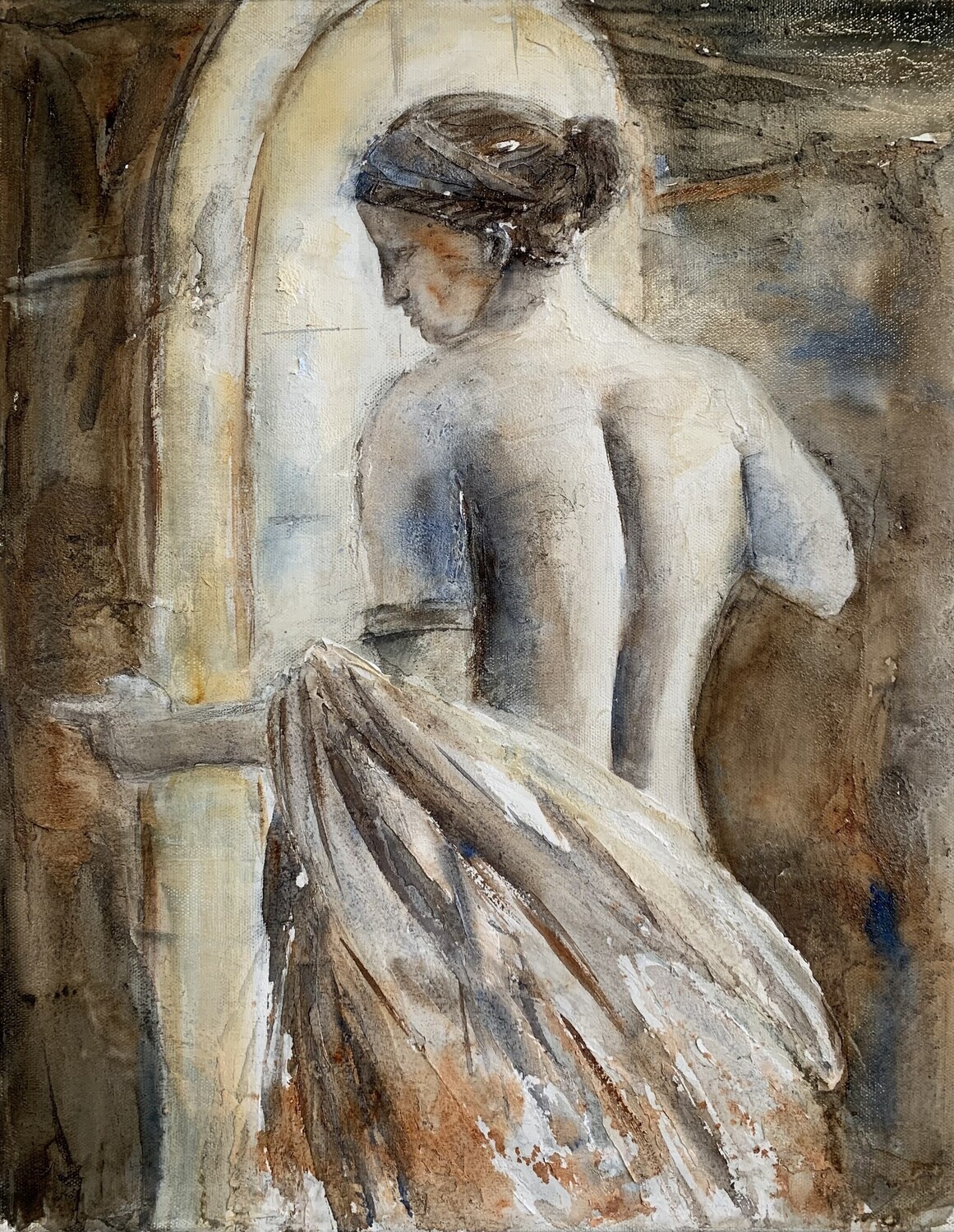Venus of Arles
I have always been fascinated by sculpture and the ability to carve the stone or throw the clay with such precision, bringing it to life.
This series of my “sculptural” work started with “Three Graces” - Roman bas-relief I saw at the Louvre in November. I immediately knew I wanted to paint it and explore intricacies of human body captured so well by the ancients.
The first Greek sculptor to dare portray a nude female, Praxiteles (4th century BC) remains one of the most famous artists of Antiquity. The works of this sculpture genius, venerated by Rome, were celebrated through the centuries.
This Venus of Arles, attributed to Praxiteles, had embodied ideal classical beauty before the Venus de Milo arrived on the scene! She was also named after the place where she was found – in this case the Roman theatre of Arles in southern France, in 1651, during the reign of Louis XIV. Again, there was debate as to whether she was Venus or another goddess, but the Sun King, greatly impressed by the ancient masterpiece, decided that she was a Venus. He had the statue restored by the sculptor François Girardon, who endowed her with her traditional attributes: the apple (awarded by Paris to the most beautiful goddess) and the mirror.
Watercolor on textured gallery wrapped 2” canvas, 16x20, unframed, ready to hang with it’s rustic look, framing would dress it up to more formal piece for your home.
